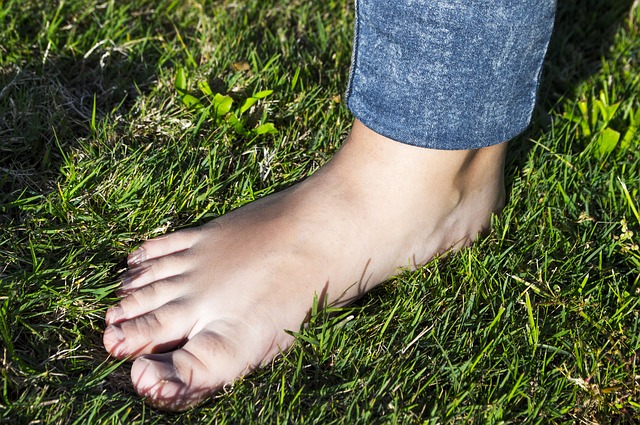This post may contain affiliate links. Please read the disclaimer for more info.
When I was younger, my mom and pediatricians/doctors over the years have often pointed out that I have flat feet. I could never understand what the problem with them was or why it was concerning to anyone. But they definitely thought it was a problem and they wanted me to solve it by wearing shoe insoles or orthotics.
Fast forward several years to my present state, and I am no further informed as to why they were so concerned. I, myself, however, am much more informed on the subject. Flat feet can be cause for concern, especially if you are starting to feel any other symptoms of pain in the lower legs, but the key word is CAN.
Foot arch height is mostly a genetically determined factor. My feet have been “flat” for as long as I can remember even though I’ve always been very active and healthy.
I used to roll my ankles often, which is a sign that my ankles were not very strong and stable. This is what the doctors should’ve been worried about. Not the fact that my feet were flat, but the fact that my feet were weak. My ankles rolling so often is a symptom of having weak feet that are not engaging enough to develop strength in my lower leg muscles that help with stabilization.
So your arches are either genetically just low, giving the appearance of flat feet, or they are low because they are weak. Even if they are genetically low, you should still be able to improve the height with some strengthening considering that everyone’s feet are weak nowadays.
To strengthen these muscles, we need to use them.
Unfortunately, we don’t do much of that in the modern day. We wear shoes constantly instead of using our bare feet and the shoes we wear are horrific, no matter how cool they are or how many features they have.
People love to talk up how their shoes have extra support or extra padding like its a good thing, unfortunately though, we’ve been sold a hoax. None of these features are necessary, but actually detrimental.
The support system or orthotics we wear cause the muscles to get weak because we’re not using them, we’re just standing on a platform that holds them in place. Then there’s the elevated heel which changes the way we walk, the narrow toe boxes that put our toes to sleep, and the thick, inflexible soles that don’t let our feet bend and move freely.
But the fixes are very easy.
To engage and use these muscles in their purest form, we simply need to walk barefoot more. Letting the toes be free is essential to building an arch considering that arch strength is created by the big toe being strong as well. The toes need freedom so they can splay, move freely, and gain strength.
Being barefoot also encourages us to walk with a forefoot-midfoot strike rather than the heel strike that shoes have all modern humans doing. The forefoot or midfoot strike engages our natural forward-propelling motion and shock absorption system that keep the arch constantly activated, creating strength.
What about the times we need to wear shoes, like on rough surfaces or in public or at work?
There is now an answer for our feet and it comes in the form of minimalist/barefoot shoes. These shoes have saved my feet from unmanageable pain and have got me exercising again like I was before I injured myself. They negate all the aforementioned problems that are created by traditional footwear and revert your feet back to its natural ways.
For a comprehensive post about the benefits of minimalist and barefoot shoes, click here.
A great place to start is with the Whitin Cross Trainer. This is a minimalist shoe that offers:
-
a wide toe box so the toes can splay and engage the foot arch
-
a zero drop sole (non-elevated heel) for proper stride length and to use the forefoot/midfoot strike to activate the foot arch
-
a flexible sole so your feet can feel and adapt to the ground more, naturally activating more muscles throughout the foot


Leave a Reply